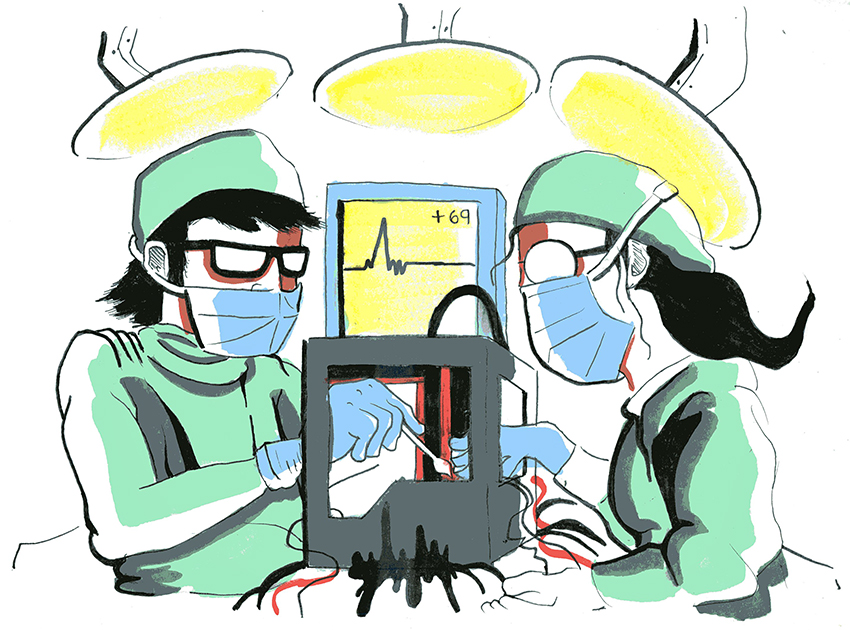Surgeons at UT MD Anderson Cancer Center in Houston have brought 3-D printing into the operating room.
Cancer patients sometimes have body parts removed as part of treatment, but doctors have faced issues in producing precisely made prosthetics. Surgeons sometimes use a patient’s own nonessential bones to carve out prosthetics, but this lacks precision and improperly made prosthetics limit a patient’s ability to properly move.
As part of reconstructive surgery, plastic surgeons at MD Anderson have begun using 3-D printers to help them create duplicates made from polymers. Models from 3-D printers serve as templates and help surgeons carve out bone replicas. 3-D-printed materials also let surgeons better plan out a procedure, improving surgical outcomes.
“When we have a patient who has a tumor that’s invading, for example, their jaw, we have to cut out an outline of the tumor but also the jaw with it,” said Patrick Garvey, associate professor of plastic surgery at MD Anderson. “In order to replace that section of bone that’s removed, we’re taking part of the patient’s’ bone out of their leg. The guide for the leg matches the jaw, so when you bring up the bone it exactly fits into the space.”
In order to make properly fitted cutting guides, a replica of the body part to be replaced is first scanned to make a digital plan for the printer. The use of digital planning in prosthesis development produces superior results, according to Garvey.
“The main advantage is that with 3-D printing, the exact shape can be reproduced from CAT scan data,” said David Bourell, UT mechanical engineering professor and 3-D printing researcher. “This makes the replacement bones a good match to the person’s natural bone.”
The printer then prints out the parts using a process called additive manufacturing, a technology developed in UT’s department of mechanical engineering. The printer lays out thin layers of polymer until the item is finished.
This is just one of many promising uses for 3-D printers, which are becoming more widespread in medicine, Garvey said.
“I think over the next decade it’s going to become more common,” Garvey said. “Something we used every couple months five years ago, we’re now using several times a week.”
Entire prosthetic limbs are already being printed by engineers and physicians, providing an easier way of making an exact fit for patients. Children with prosthetics can have them replaced as they grow using digital blueprints kept on file.
“For prosthetics, it is possible to scan the nub and produce one that fits extremely well, helping with comfort,” Bourell said. “Cost is always a factor too, and 3-D printing can be competitive since there’s little labor involved in creating the part.”
Researchers are also developing printers that can print out human tissue or pills. In the future, patients could receive a digital drug prescription and print it themselves at home. In March, the Food and Drug Administration approved the first 3-D-printed pill for the treatment of epilepsy.
“We’re definitely in the infancy of using this technology,” Garvey said. “The sky’s the limit at this moment.”





















